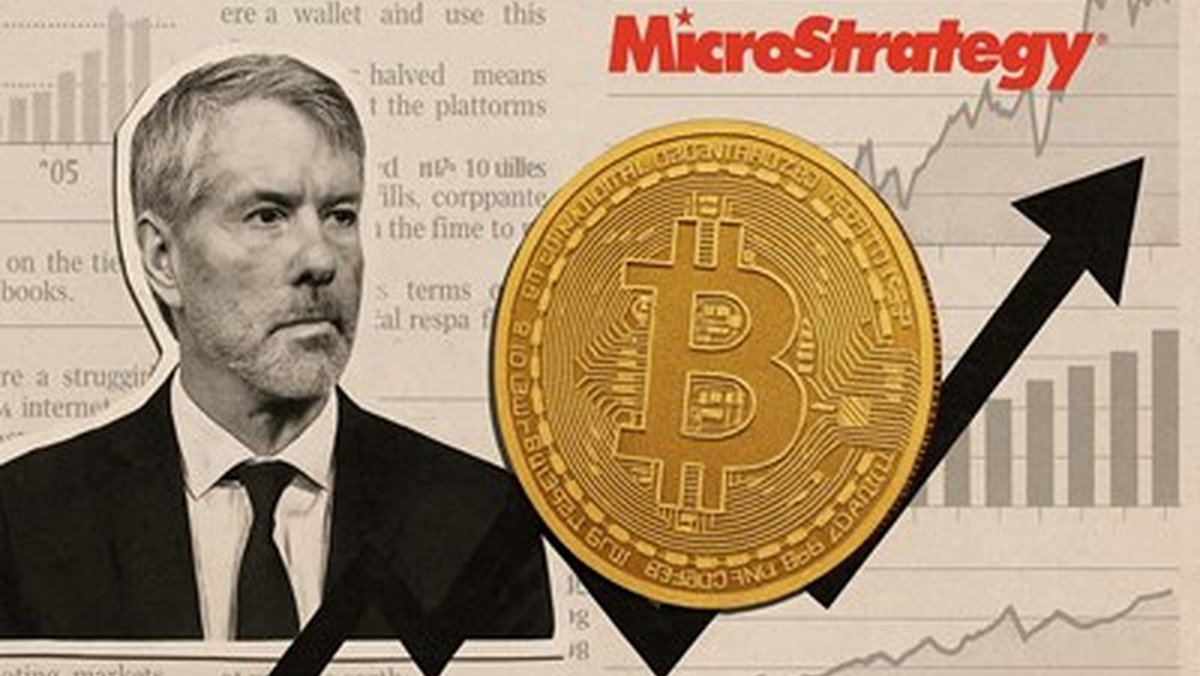When a Downtrend Feels ‘Easier’—Even As It Hurts
Crypto is bleeding. Again. Bitcoin has slipped underneath marquee levels and social feeds are oscillating between exhaustion and doom-posting. Yet some professionals insist this is the easiest downtrend they’ve traded. At first glance the comment sounds delusional. But looked at through the lens of market plumbing—who is forced to sell, which pipes are clogged, where credit is breaking—it has a point.
In 2022, crypto didn’t just go down; its infrastructure cracked. The Terra/UST reflexive unwind detonated tens of billions, vaporized balance sheets, and triggered a cascade of loan recalls and asset fire-sales. That same year FTX imploded into bankruptcy, eliminating core prime-brokerage functions for much of the industry. In early 2023, crypto-facing banks failed or were seized, and USDC briefly depegged. It was not a dip; it was a structural triage. Today’s tape is rough, but the pipes are sturdier. Let’s unpack the differences, then move to a practical trading framework for a psychologically manageable—yet still dangerous—downtrend.
2022–2023 vs. 2025: What’s Actually Different
1) From existential failures to cyclical repricings
Then (2022–2023): Terra’s algorithmic stablecoin UST lost its peg in May 2022 and nuked the LUNA asset, setting off an industry-wide solvency shock. The episode culminated in fraud and criminal charges against Terraform leadership. Later that year, FTX filed for bankruptcy, taking with it exchange credit lines, OTC liquidity, and the market’s primary cross-margin venue. In March 2023, Silvergate voluntarily liquidated and Signature Bank was closed by regulators; meanwhile USDC briefly traded as low as $0.88 after SVB’s collapse, underscoring fiat-to-crypto fragility. These were failures of plumbing, not just price. ([Reuters][1])
Now (late 2025): The drawdown is ugly, but it’s dominated by positioning—derivatives leverage, profit-taking by long-term holders, ETF outflows on macro jitters—rather than cascading insolvencies. Spot ETFs, qualified custodians, improved segregation of client assets, and diversified banking partners have reduced single-point-of-failure risk. Enforcement remains fierce, but the compliance perimeter is clearer for large, regulated players. In short: less credit contagion, more garden-variety volatility.
2) Liquidity sources have multiplied—even if sentiment has soured
Post-2023, market makers and custodians rebuilt rails outside of the handful of venues that failed. Depth is thinner on bad days and ETFs can amplify flows, but the order book is no longer a single exchange’s captive. That matters: in 2022 a venue blow-up removed both price discovery and credit; in 2025, a venue wobble is typically just another lane on the highway closing temporarily.
3) Regime knowledge is higher
Institutional allocators now treat crypto as a sleeve, not a YOLO. CIOs have loss thresholds, rebalance policies, and a glidepath for redemptions. That creates predictable selling at times—but predictability is tradable. Retail, by contrast, has become more tactical and less levered than the forever-long, high-perp culture of 2021. Pain is real; plumbing risk is lower.
What ‘Easiest Downtrend’ Really Signals
‘Easier’ does not mean ‘painless.’ It means fewer latent bombs. When pros say this stretch is navigable, they mean:
- Transparency > opacity: More of the flows now happen through visible vehicles (ETFs, on-chain stablecoin rails) vs. shadow credit between trading firms. Outflows may pressure price, but they’re observable and tend to mean-revert.
- Balance-sheet risk is bounded: We have fire-drills (liquidations) instead of financial fires (solvencies). Liquidations are violent but finite; insolvencies metastasize.
- Macro alignment is plausible: Rate policy is nearer an easing cycle than in 2022; fiscal and tariff noise is high, but the tail-risk of a wholesale banking pulse is lower than the SVB window.
That said, a structurally healthier market can still trend down for months. ‘Easier’ is a statement about survivability, not about imminent upside.
Sanity-Checking the History: Why 2022 Was Different (Receipts)
For newer traders, here are the anchors:
- Terra/UST collapse: The algorithmic stablecoin lost its peg, destroying tens of billions and triggering regulatory and criminal fallout for Terraform Labs leadership. This event is widely credited with kicking off the 2022 ‘crypto winter.’ ([Reuters][1])
- FTX bankruptcy (Nov 11, 2022): A core exchange and prime broker failed, hammering liquidity and industry credit lines.
- Banking stress and USDC depeg (Mar 2023): Silvergate liquidated, Signature was closed, and USDC temporarily traded at ~$0.88 during the SVB fiasco—an acute stress on fiat–crypto pipes.
Contrast that to 2025: we see steep price declines and ETF outflows on macro headlines, but the system isn’t losing its banks, its dollar rails, or its major custodians. That’s a difference you can trade.
The Psychology–Plumbing Matrix
To decide how ‘bad’ a downtrend is, map two axes: psychology (fear/greed) and plumbing (credit/liquidity health). 2022–2023 was bottom-left: panic plus broken pipes. Today looks top-left: panic plus mostly functional pipes. That means the market can mean-revert faster once positioning is cleaned, but the lack of structural failure doesn’t guarantee an immediate V-shaped recovery—especially if macro stays noisy.
Flow Diagnostics: Is This Capitulation or a Slow Grind?
Here’s a focused checklist teams use during stress:
- Who’s selling? Long-term holder distribution, ETF redemptions, miners risk-managing treasuries, or forced liquidation flows. Long-term holder distribution near local highs pairs with poor short-term breadth—classic window for a grind rather than instant capitulation.
- What’s the leverage state? Look for perp funding flipping deeply negative then mean-reverting. If funding stays mildly negative for weeks, that’s a grind regime; if it spikes and snaps back, that’s capitulative.
- Basis and spot-premium: Healthy recoveries feature futures basis normalizing and cash-and-carry reopening (safe carry reappears). Persistent negative basis = risk-off.
- Stablecoin net-issuance: When circles of capital are expanding, stables grow. Flat or negative net-issuance = capital contraction. A turn in net-issuance often precedes price stabilization.
- On-chain realized loss clusters: Capitulation typically prints concentrated realized losses; a grind prints smaller, extended loss streaks.
Right now, most signals resemble a grind with periodic air-pockets. That is tradable—but also fatiguing—because signals don’t deliver clean resolution the way cascading liquidations do.
Tactical Playbook: How Pros Trade an ‘Easier’ Downtrend
1) Positioning, not prediction
In adversarial markets, where you enter matters less than how you size and hedge. Practical rules:
- Stagger entries and exits: Ladder orders around weekly structure (prior week’s low/high; weekly VWAP bands) rather than intraday scalps that can be run by wicks.
- Separate core vs. tactical: Keep a small, unlevered core sleeve to avoid FOMO-chasing. Layer tactical perps around it with explicit stop-loss tripwires.
- Hedge the basis risk you actually have: If your returns are USD-marked but your treasury (or liabilities) sits in stables, stress-test a temporary stablecoin depeg while funding costs spike, however unlikely. 2023 taught the industry to model that tail.
2) Respect timeframes
A weekly chart can stay ‘broken’ for months while 4H prints tradable long setups. Anchor to one execution timeframe and treat higher timeframes as regime filters, not trade triggers.
3) Expect ‘rally traps’ around policy headlines
Macro tapes love to squeeze when the policy path seems to clarify (rate cuts, shutdown resolution, trade headlines), only to fade once the flow is absorbed. Trailing stops and partials help you bank gains without predicting which headline sticks.
4) Correlation discipline
When BTC dominance rises into stress, alt L/S edges shrink. Lower cross-exposure, reduce gross leverage, and demand idiosyncratic catalysts to justify alt longs. The 2025 alt tape remains thin and event-driven.
Why The 2025 Drawdown Could Still Be ‘The Bottom Before The Next Leg’
Professional optimism rests on a few durable pillars:
- Institutional pipes survived the stress-tests of 2022–2023. Those episodes created lasting risk controls and diversified rails—fewer single points of failure.
- Policy clarity is incremental, not binary. Enforcement remains active, but larger vehicles (spot ETFs, qualified custodians, tokenized funds) give allocators compliant paths to deploy. The regime is ‘tough but knowable,’ which is better than ‘unknown and capricious.’
- Forced sellers are fewer. Liquidations happen, but we see fewer feedback loops where every dollar down triggers margin calls at ten desks. That moderates tail risk.
The bear case, of course, is that ETF outflows and lower retail participation extend the chop. ‘Easier’ plumbing can coexist with a tedious, months-long digestion of prior gains.
Scenario Map (Next 4–12 Weeks)
- Sideways–Up Accumulation (40%): BTC carves a base; funding normalizes; ETF outflows slow; stablecoin net-issuance turns modestly positive; alts catch selective bids. Expect staircase up.
- Grind Lower (35%): Recurring macro scares + ETF outflows keep pressure; no solvency stress, but realized losses spread out over time; alts underperform; rallies are for selling theta.
- Air-Pocket & Reversal (20%): A final liquidation flush (funding deeply negative, basis collapses) prints a capitulation low, followed by a face-ripper squeeze. High risk/high reward for fade traders.
- Low-Probability Shock (5%): A genuine plumbing failure (e.g., stablecoin or major venue impairment) reignites 2022-style fear. This is why we keep tail hedges alive.
Risk Controls That Actually Work
- Define kill-switches: If daily P&L drawdown > X% or if net exposure > Y at a time when BTC 1w realized vol > Z, flatten or halve risk—no exceptions.
- Match leverage to liquidity: Your gross leverage should scale inversely with market depth. On weekends/holidays, halve leverage by rule.
- Keep dry powder in dollars and stables: Diversify counterparty and instrument risk. Assign roles: one wallet for core, one for tactical, one for hedges; don’t mix.
- Run drills: Once a month, simulate a 15% BTC gap + exchange outage + 100 bps funding swing. You will discover operational bugs that cost real money in live conditions.
What Would Make This Downtrend ‘Hard’ Again?
Three red flags would change our assessment:
- Stablecoin trust fracture: A repeat of 2023’s depeg dynamics on a larger scale—especially if paired with bank stress—would turn a price problem into a funding problem.
- Prime brokerage failure: If a core derivatives venue or clearing intermediary impaired client assets, liquidity would crater.
- Regulatory whiplash: A unilateral policy shift that disrupts ETF operations or custodial arrangements could force disorderly flows. Recent cycles have trended toward codification rather than shocks, but policy risk is never zero.
For Builders and Long-Term Allocators
If you’re not a trader, a structurally healthier drawdown is exactly when you can act rationally. Historicals show that after plumbing crises abate, risk premia for enduring assets remain elevated while narratives are still bruised. That’s when disciplined DCA, treasury rebalancing, and infrastructure bets tend to outperform over 12–24 months. None of this negates the chance of another 20–30% downtick; it simply asserts that the distribution of tail risks has shifted from ‘existential’ to ‘volatile.’
Bottom Line
Calling any downtrend ‘easy’ is a misnomer; the pain is real and the tape is treacherous. What professionals mean is that, unlike 2022–2023, today’s drawdown is dominated by positioning and psychology rather than plumbing failures. That doesn’t guarantee fast upside, but it does mean you can deploy a process instead of praying for triage to end. Trade the flows in front of you, respect the regimes on higher timeframes, and keep tail hedges for the low-probability shocks that would turn this ‘easier’ market hard again.







